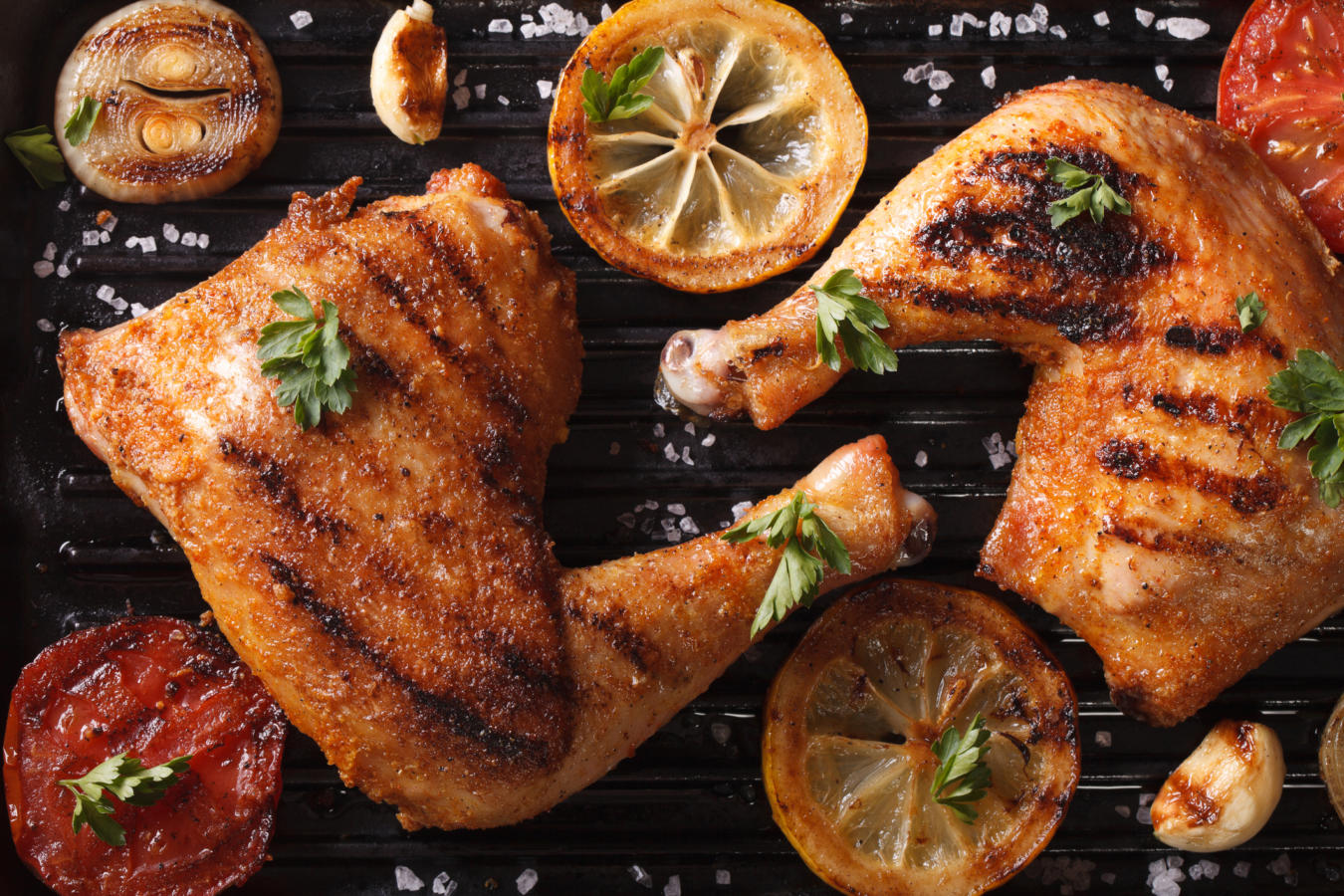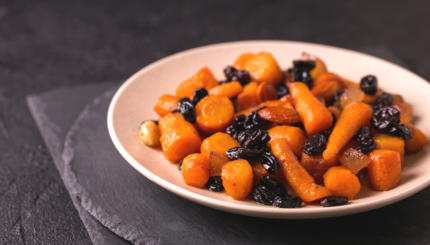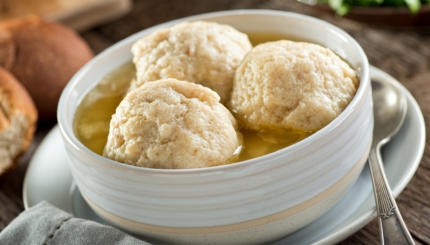Question: Why is poultry considered meat for the purpose of separating meat and dairy? Birds don’t give milk so you wouldn’t be seething a kid in its mother’s milk if you mixed chicken and dairy.
–Anita, Arkadelphia
Answer: Mmmm, chicken milk. You mean you’ve never tried it?
But seriously. According to the rules of kashrut given in the Torah, it would seem that fowl and land animals are in different dietary categories. Land animals must have split hooves and chew their cud in order to be (Leviticus 11:3, Deuteronomy 14:6). The doesn’t list a set of criteria that birds have to meet in order to be kosher, it simply provides a list of birds that are unacceptable (Leviticus 11:13-19, Deuteronomy 14:11-18).
The idea of separating meat from dairy comes from the prohibition against boiling a kid in its mother’s milk. A kid is a land animal, and fowl are ostensibly in a different category altogether. So why avoid chicken Caesar salad?
With your help, My Jewish Learning can provide endless opportunities for learning, connection and discovery.
It turns out that fowl was not always considered meat according to Jewish law. I asked my Jewish food guru, Professor David Kraemer of the Jewish Theological Seminary, about the history of fowl in kashrut, and he pointed me to a in Tractate Hullin (8:4) which discusses this issue in some depth.
Two opinions are presented. One is from Rabbi Akiva, who posits that separating fowl from dairy is a rabbinic prohibition. Countering Rabbi Akiva is Rabbi Yose Ha-Galili, who has no problem with chicken parmesan.
In the time of the Mishnah Rabbi Yose’s position was the norm in some communities. But Kraemer says that as far as he knows there’s no post-talmudic opinion that permits eating fowl and milk together. In the 15th century, the prohibition against eating birds with dairy was codified in the Shulhan Arukh (Yoreh Deah 87:3), with the stipulation that the prohibition is rabbinic, not from the Torah.
Kraemer thinks the rabbis decided to classify fowl as meat because of the sociology of the times.
“In the ancient world, meat was eaten with relative rarity, primarily for special occasions,” Kraemer told me. “For more common special occasions, such as the Sabbath, ‘smaller’ meat would have been most common, and that was typically fowl. So people simply thought of and spoke of fowl as meat. Since this is the way people thought of it, this is the way the rabbis categorized it.”
This is a classic case of “If it looks like a goat and it tastes like a goat, it’s a goat”–even though, actually, it’s a chicken or a duck.
Good news, though: those vegan chicken strips they’re selling these days taste pretty darn close to the real thing. Just don’t tell Rabbi Akiva.



